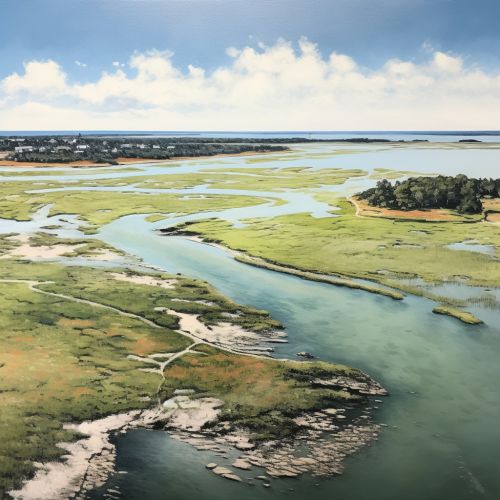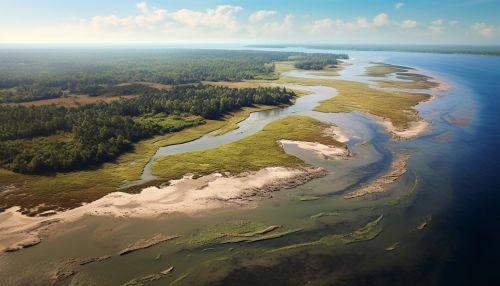Barrier Island Formation
Introduction
A barrier island is a long, narrow, offshore deposit of sand or sediment that runs parallel to the coastline. These islands are separated from the mainland by a shallow sound, bay, or lagoon and are often found in chains along the coastlines of continents and islands worldwide. Barrier islands serve to protect the coastlines from severe storm impacts, provide habitats for a variety of wildlife, and are popular tourist destinations due to their beautiful beaches and diverse ecosystems.
Formation
The formation of barrier islands is a complex process that involves various geological and climatic factors. The primary processes include sea level changes, sediment supply, wave action, tidal range, and longshore currents.
Sea Level Changes
Changes in sea level, both rise and fall, play a significant role in the formation of barrier islands. During periods of glaciation, when sea levels are lower, rivers carry sediment to the coastline, creating a broad, flat coastal plain. As the climate warms and glaciers melt, sea levels rise, flooding the coastal plain and leaving behind a series of barrier islands.
Sediment Supply
The availability and type of sediment also influence the formation of barrier islands. Sediment must be abundant and of the right composition - usually sand or other light, easily transported materials. Rivers often provide the primary source of sediment, carrying it from the interior of the continent to the coast.
Wave Action
Wave action is another critical factor in the formation of barrier islands. Waves transport sediment along the coast in a process known as longshore drift. Over time, this sediment accumulates and forms a barrier island. The size and shape of the island are determined by the wave energy and the amount of sediment available.
Tidal Range
The range of the tide, or the difference between high and low tide, also influences barrier island formation. Areas with a large tidal range tend to have fewer, larger barrier islands, while areas with a small tidal range have more, smaller islands.
Longshore Currents
Longshore currents, which are ocean currents that move parallel to the shore, transport sediment along the coast. This sediment can accumulate over time to form barrier islands.
Characteristics
Barrier islands are characterized by their unique features, which include beaches, dunes, overwash flats, and marshes.
Beaches
The beach is the part of the barrier island that faces the ocean. It is composed of sand and is shaped by the action of waves, currents, and wind.
Dunes
Dunes are mounds of sand that are formed by the wind. They are found behind the beach and serve to protect the island from storm waves and flooding.
Overwash Flats
Overwash flats are low-lying areas that are flooded during storms. They are formed when waves wash over the dunes and deposit sand on the backside of the island.
Marshes
Marshes are wetlands that are found on the landward side of the barrier island. They are composed of grasses and other plants that can tolerate salty conditions.
Importance
Barrier islands are important for several reasons. They serve as a buffer against storm surge and wave impacts, protecting the mainland from erosion and flooding. They also provide critical habitats for a variety of plant and animal species, including many types of birds, fish, and invertebrates. In addition, barrier islands are popular tourist destinations, providing opportunities for recreation and contributing to local economies.


